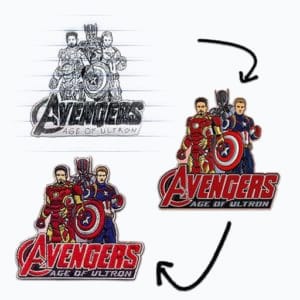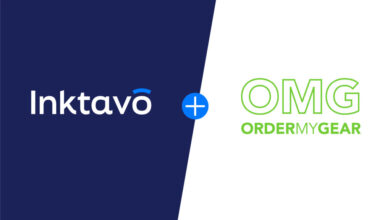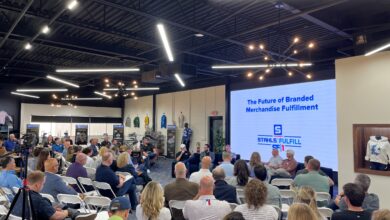
For certain types of orders, embroidered patches offer advantages over direct embroidery. In the uniform industry, a sewn emblem with the company’s logo and/or employee’s name can easily be removed and replaced when one person leaves the company and another joins. This means the uniform can be used for a longer period before it needs to be replaced.
When promotional apparel is ordered for an event with a date and year, a patch has the advantage of being quicker to apply or easily removed. If a dozen XXXL sweatshirts for the annual fall festival didn’t sell, the patch can be taken off, and the sweatshirts used for another event. No leftover merchandise means higher profits.
Perhaps there is a situation where organizers want to offer a memento, but do not want to commit to the cost of offering decorated apparel, which involves choosing styles, colors, and sizes. Instead, participants can simply purchase an embroidered emblem they can adhere to the garment of their choice at home.
Many times promotional items are not all that easy to sew on directly. Golf bags, luggage, and backpacks often require special hoops or a certain type of embroidery machine that a shop might not have. In these situations, an embroidered patch makes a great option.
Application is another money-saving area. While it takes a specialized machine to embroider directly, any sewing machine can be used to apply a patch, or it can even be done by hand. The item does not need to be hooped or unhooped, and it does not require any special training or experience.
A multi-head machine with accompanying software is a significant investment to which approximately 18% of that cost must be set aside for operating costs and maintenance. So for shops that want to offer embroidery without the investment, it’s an ideal option.

There also is the option of adhering patches with a heat-applied adhesive backing, which lessens the labor cost even more. This should be done with a commercial heat press for best results, but it will take much less time than sewing.
In general, direct embroidery costs more than creating a patch. So for budget-conscious customers, this is a great option for those who want to save money.
As you prepare to order your first emblem, here are the basics you need to know:
Emblem size
The most popular sizes range from 1-3 ½”. Factors that dictate the size include the artwork and the substrate. If it will be a left-chest placement, the standard for adults is 3 ½” X 3 ½”. For youth and pockets, 3″ X 3″ is the norm.
With caps, the most popular placement is front and center. For this area, standard sizing is 2″ X 2″. However, you could do a patch as large as 5″ W X 2 ½” H if the situation required it.
Sleeves and shoulders are two other popular places to put patches, and they fall within this same size range.
In general, the smallest size is approximately 1″ X 1″, and the largest at 18″ X 11″. If your needs fall above or below these ranges, consult with your supplier.
Emblem shape
There are standard shapes, which generally include rectangle, square, oval, circle, or shield. But most suppliers do any custom shape. Examples might be a fruit, sports equipment, an animal, a flower, or an irregular border that is created to outline the shape of the artwork.

Thread colors
Each thread color requires its own needle. This limits how many colors you can have in a design. Most commercial embroidery machines have a maximum of 15 needles, so this limits you to that many colors. If you have a design with a lot of colors, be sure to ask your supplier what its maximum number is for colors. But in general, most patches feature two or three colors.
Some manufacturers include up to a certain number of colors in their base pricing and have an upcharge for additional colors. For example, the price sheet might include up to six colors of thread, and over that, there’s an added 10% per color.
In terms of matching the colors in your design to available thread colors, most suppliers have thread color cards. You can look at one of these to see how close you can match the colors of your design to the threads.
In some cases, if you want a color that’s not on the company’s thread chart, there might be an upcharge of 20% or more. The reason is the supplier has to purchase that color specifically for your order and might never use it again.
Quantity
It goes without saying, the greater number of emblems you order, the lower the price. The first question will be what is the minimum? Some suppliers have no minimums but expect to pay a premium price for only a few pieces.
It’s always better to order extras to have on hand for unexpected circumstances rather than run out. Many suppliers have price sheets on their websites, which makes it easy to see where the volume discounts fall to help you decide how many pieces you need.
Some other questions you should ask when shopping for an emblem manufacturer are:
- Do you charge for artwork and/or setup?
- Do you offer a preproduction sample for approval?
- What is the turnaround time on the preproduction sample?
- Is there a charge for revisions?
- Up to how many revisions are allowed?
- How soon after sample approval will I receive my order?
- How much is charged for shipping?
- What satisfaction guarantee do you offer?
Armed with this information, you will be better prepared to make the right decisions regarding your needs and ensure that your client is happy with the finished product.



